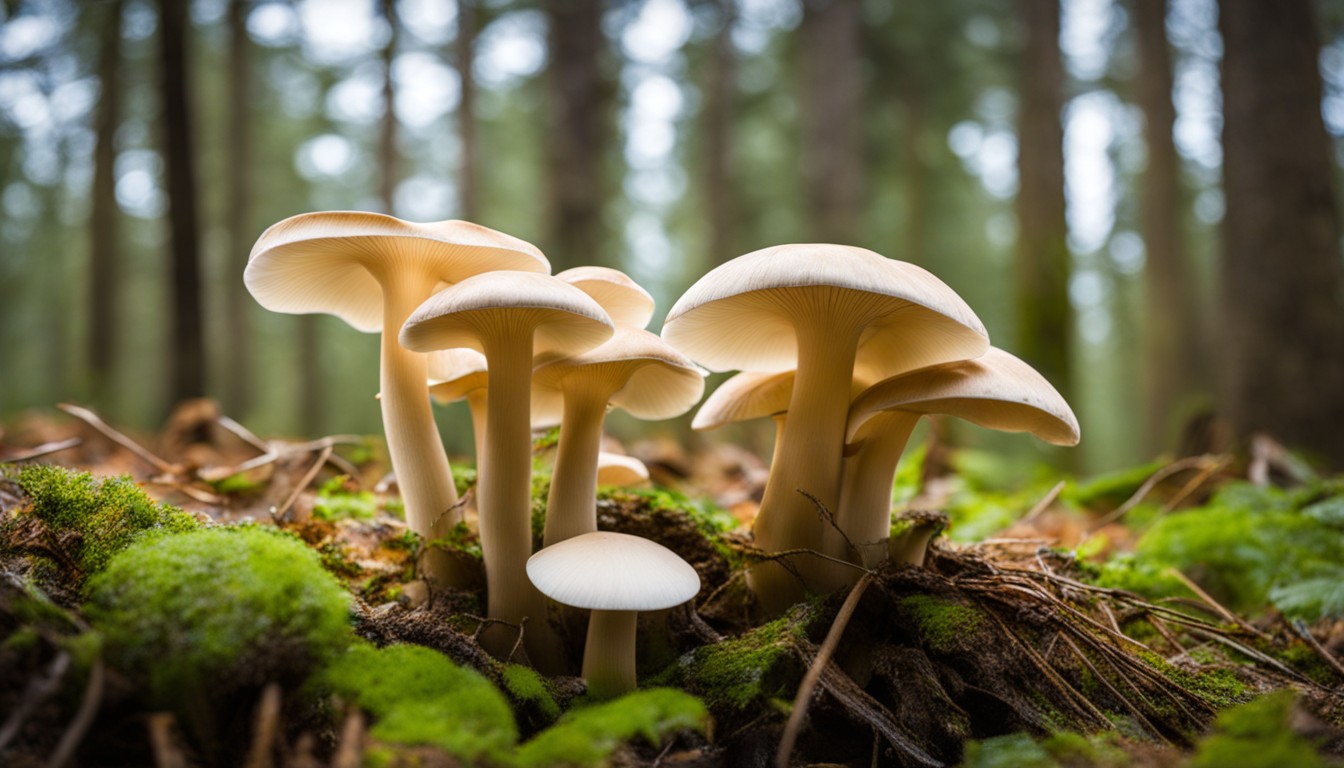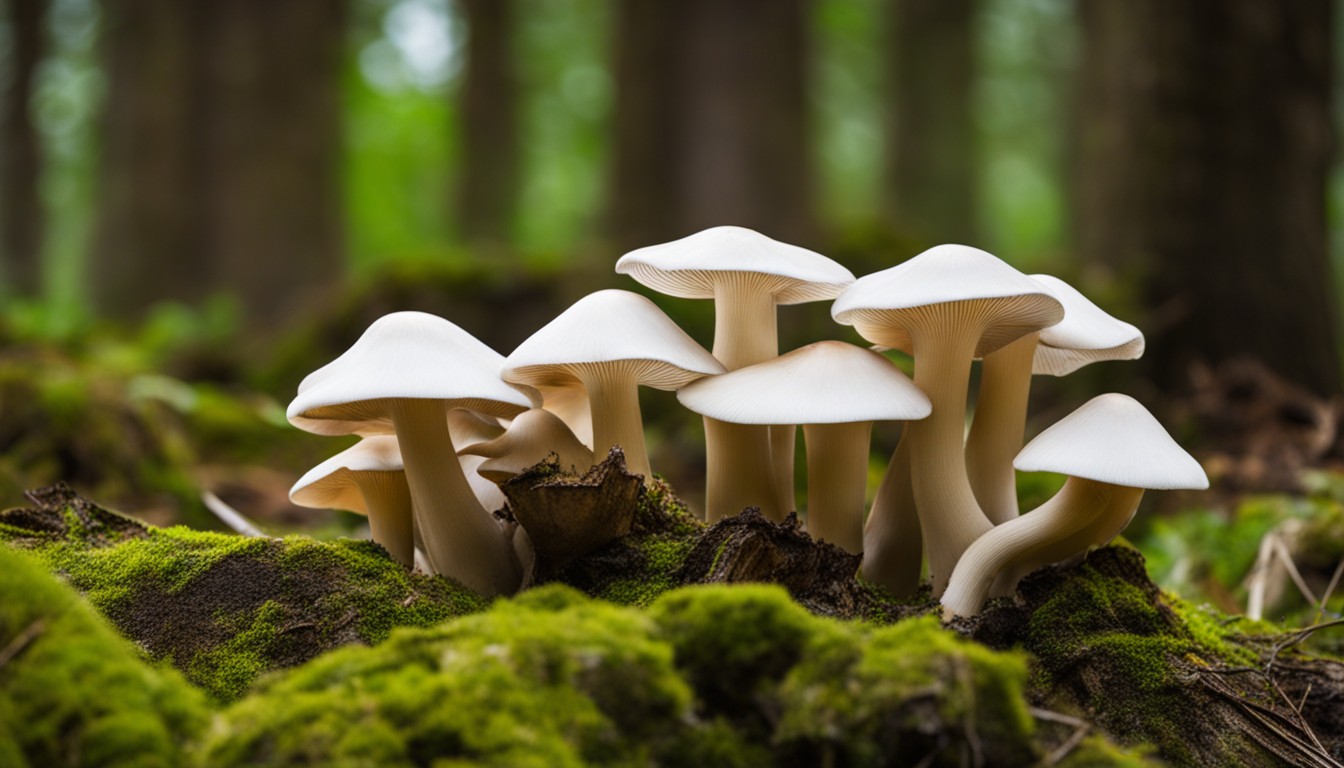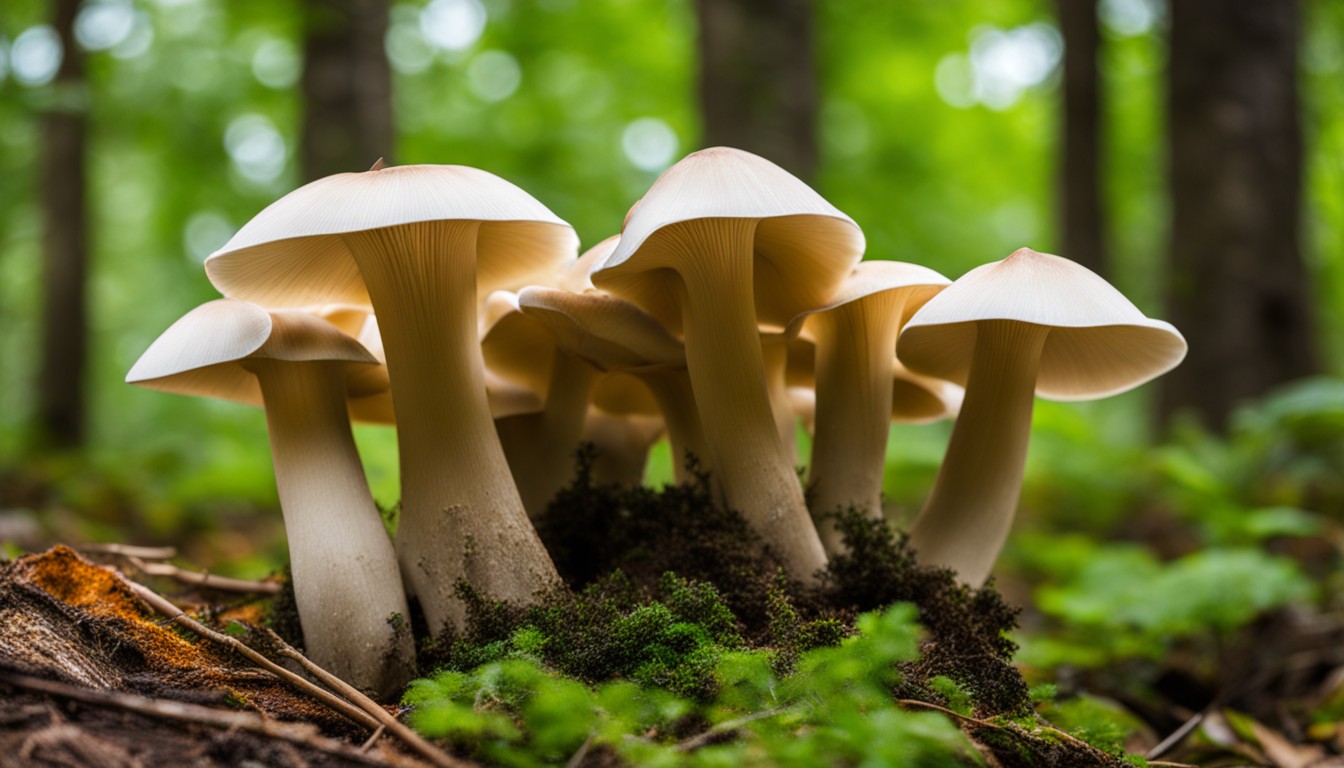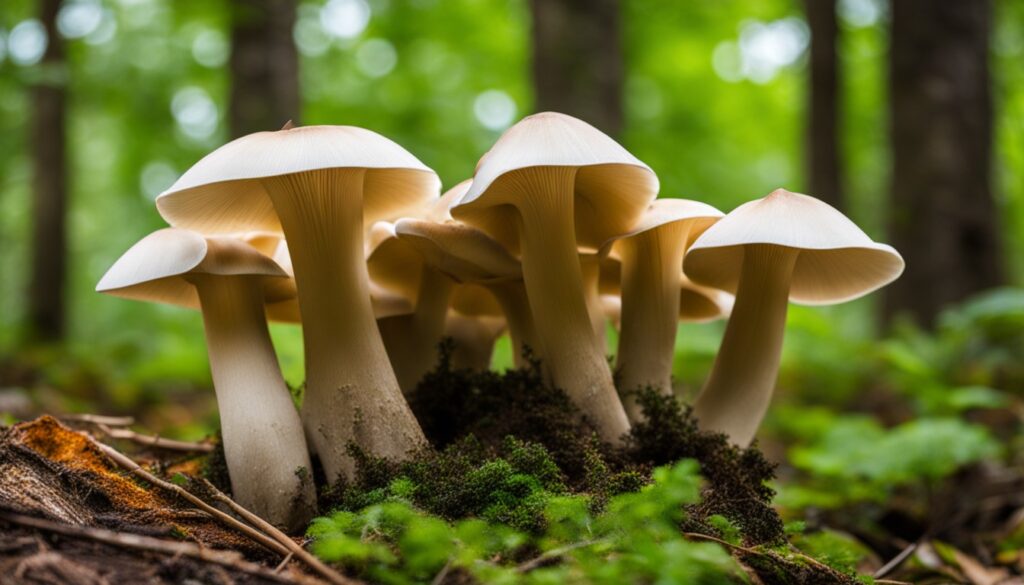Oyster mushrooms are a delicious and versatile ingredient that can be used in a variety of dishes. In this comprehensive guide, we will explore the process of dehydrating and preserving oyster mushrooms. Learn how to properly prepare and dry oyster mushrooms to enhance their shelf life and flavor. Discover the different methods of preserving dried oyster mushrooms, including storage techniques and recipe ideas. Whether you’re a seasoned chef or an aspiring food enthusiast, this guide will provide you with the knowledge and techniques to enjoy oyster mushrooms year-round.
Choosing the Right Oyster Mushrooms
Navigating the mushroom aisle may feel overwhelming but recognizing premium quality oyster mushrooms involves identifying a couple of key features. They usually sport a soft texture, a mild scent, and a color ranging from white to brownish-grey. A deep shell-shaped cap and distinct gills are other characteristics of high-quality specimens.
When purchasing oyster mushrooms, consider their adaptability to your preferred method of drying or preservation. Some varieties, like the pearl or the blue oyster mushrooms, are renowned not just for their robust flavors, but also their texture that withstands the dehydration process making them prime choices for dried mushroom connoisseurs.
Understanding Different Varieties
In the arena of oyster mushrooms, numerous varieties grace our ecosystems, each presenting unique characteristics that can make your meal remarkably special.
- Golden Oyster Mushrooms – distinguished by their vibrant yellow hue and vivid taste.
- Blue Oyster Mushrooms – renowned for their blue-toned caps and robust flavor.
- Pink Oyster Varieties – known for their eye-catching pink hue and subtly sweet palate.
- White Elm Oyster – identified by their snow-white caps and mild, delicate flavor.
- Phoenix Oyster – appreciated for their delicate, savory taste.
Selecting Fresh and Mature Mushrooms
When it comes to the dehydration process, both the freshness and maturity of oyster mushrooms play a significant role. Mature mushrooms with a fresh, firm texture and a bright color add robust flavor to your dishes upon rehydration.
- Look for mushrooms with a firm texture and a moist, but not slimy, surface.
- The color should be bright, not discolored or darkened.
- Mature mushrooms are larger and have a more rounded cap; these ones give thorough dehydration results.
- Always prefer fresh mushrooms over canned or pre-packaged ones for dehydration.
Preparing Oyster Mushrooms for Dehydration
Before diving into the dehydration process, ensure your oyster mushrooms are in their prime. Cleaning is a primary step where all dirt and debris are removed without soaking them. Follow this by a mindful trimming of the tough, woody parts and slicing to achieve the perfect thickness for uniform drying.
In dehydration, a careful preparation of oyster mushrooms, which excludes washing, promotes efficient drying and prevents a brittle, paper-like texture.
When preparing oyster mushrooms for dehydration, care should be exerted. Do not wash them since this will add unwanted moisture, instead opt to brush off any dirt gently. Additionally, ensure to cut them uniformly to aid equal drying and the slices shouldn’t be too thin to prevent them from becoming paper-like after drying.
Cleaning and Trimming the Mushrooms
Before embarking on the dehydration journey, it’s paramount to properly clean and trim your oyster mushrooms. This ensures better dehydration results and helps maintain original flavors.
- • Remove any visible debris from the oyster mushrooms with a soft brush or cloth.
- • Trim off any damaged or discolored parts of the mushroom.
- • Cut the stem close to the cap, leaving only the most tender portions.
- • Rinse the mushrooms quickly under cold water to remove any residual dirt. Avoid soaking as it can make the mushrooms waterlogged.
- • Spread the cleaned and trimmed mushrooms on a clean towel to air dry before dehydration.
Slicing the Mushrooms to the Optimal Thickness
When it comes to dehydrating oyster mushrooms, slicing them to an optimal thickness is crucial. This vital preparatory step significantly determines the efficiency of the drying process.
- The art of slicing: Achieving the proper thickness enhances not only the drying process but also the texture of the mushrooms once rehydrated.
- The thickness of the mushroom slices directly impacts the drying time. Thicker slices take longer to dehydrate, while thinner ones might dry too quickly and become brittle.
- Aim for a consistent slice thickness. This ensures even drying and prevents some pieces from becoming over-dehydrated while others are still moist.
Dehydrating Oyster Mushrooms

For guaranteed success with oyster mushroom dehydration, moisture extraction is key; thin layers are recommended for even drying. A hint of flexibility remaining, speaks to perfect dehydration; it keeps the nutrients intact but extends shelf life remarkably.
A comprehensive guide to home oyster mushroom dehydration empowers you with mastery over different dehydration techniques. From dehydrators, oven-drying to air-drying, you subtly manipulate time, temperature, and air flow to protect the delicate textures and robust flavors oyster mushrooms offer.
Using a Dehydrator
When using a machine dehydrator to dry oyster mushrooms, it’s crucial to maximize its usage for the optimal result. The process may be simple but requires strategic steps and professional tips to ensure successful drying.
- Ensure the mushrooms are spread evenly across the trays for uniform dehydration.
- Set the temperature of the dehydrator to a suitable range for mushrooms, typically around 115-125°F.
- Allow adequate time for dehydration, often around 4-8 hours depending upon the mushroom’s thickness and the dehydrator’s efficiency.
- Rotate the trays periodically to facilitate even drying.
- Be patient and allow the mushrooms to cool down before checking for complete dryness, as they can feel softer when hot.
Air Drying Techniques
Traditional air-drying techniques offer an effective alternative when a dehydrator is not available. This traditional method capitalizes on ambient temperature and humidity, making the process energy-efficient and cost-effective.
Harnessing nature’s elements, oyster mushrooms can be strung together and hung in a cool, dry, well-ventilated area for air drying. The free circulation of air accelerates the evaporation of moisture, preserving the mushrooms’ quality.
Be mindful to avoid direct sunlight exposure during the drying process. Excessive heat or light can deteriorate the nutrients in your oyster mushrooms, affecting their flavor and texture.
Another indigenous technique involves using paper bags or cloth bags for air drying. The bag assists in absorbing excessive moisture, aiding the drying process.
It’s crucial to note that the drying time varies according to the weather conditions and the thickness of your mushroom slices. Regular monitoring helps ensure optimal drying and prevents mold growth or loss of quality.
Optimizing Drying Conditions
Getting the conditions just right for drying oyster mushrooms can often be the difference between a successful dehydration process and a less effective one. Ensuring that both temperature and relative humidity are optimal, and that there is sufficient air circulation can markedly improve the quality of the dried mushrooms.
The quality and preservation of the nutritional profile of dehydrated oyster mushrooms significantly rely on optimal drying conditions. When the details of temperature, humidity, and air flow are meticulously regulated, the resulting dried mushrooms maximize flavor and health benefits.
Controlling Temperature and Humidity Levels
Temperature plays a pivotal role in the preservation quality of dried oyster mushrooms. A consistent, low heat preserves flavor and color, whereas high temperatures can cause discoloration and degradation of nutrients.
Humidity control is equally paramount in the dehydration process. Maintaining a low humidity level prevents potential mold growth, ensuring the mushrooms reach their optimal dryness.
Use a dehydrator with both temperature and humidity settings. This allows for real-time adjustments, responding to changes that might affect the dehydration process.
Consider your region’s climate. In humid areas, you may need to run your dehydrator longer or at higher temperatures to achieve optimal dryness.
When drying is complete, ensure the environment for storage is climate-controlled. A cool, dry place will prevent moisture absorption and extend the shelf life of your dried mushrooms.
Ensuring Proper Air Circulation
A crucial prerequisite for successful mushroom dehydration is unparalleled air circulation. It enables moisture to vaporize efficiently, preventing an environment conducive to mold growth and bacterium propagation on the oyster mushrooms.
Dehydrators designed for superior air circulation are preferred where the hot air uniformly pervades the entire dehydrator, thus facilitating even drying of all mushroom pieces.
Another effective technique encompasses periodically rotating the dehydrating trays if using a dehydrator, or inverting the mushrooms if air drying, to promote equitable air exposure.
Remember to arrange the mushroom slices without overlapping, a significant protocol not just in the positioning phase but throughout the dehydration process to permit free airflow.
Placement of the dehydrator or the air drying setup also plays an essential role, ideally choose a location with low humidity and ambient airflow, ensuring your oyster mushrooms dry evenly and faster.
Storing and Preserving Oyster Mushrooms

The secrets to long-term storage of dried oyster mushrooms for maximum freshness hinge on proper packaging and correct storage conditions. Vacuum-sealing in airtight, light-resistant containers and storing at a cool ambient temperature will keep them fresh and maintain their nutritional value.
Determining the shelf life of dehydrated oyster mushrooms involves various factors. Moisture levels, bacteria, light exposure, and temperature fluctuations are key elements that influence longevity and freshness of these dehydrated delicacies.
Packaging and Labeling
Efficient labeling plays a crucial role in organizing dried oyster mushrooms. Use clear, concise descriptions, including the type of mushroom, harvest date, and dehydration method, to easily identify each batch.
To enhance readability, choose permanent, smudge-free markers and durable tags. It’s even advisable to consider color-coding or icon-based labeling for easy visual identification and differentiation.
On packaging, using hermetically sealed containers with desiccat bags ensures maximum preservation. Such packaging protects the dehydrated mushrooms from moisture, light, and oxygen – the principal spoilage agents.
As a further protective measure, containers should be firmly closed and stored in cool, dark places. Overlooked often, packaging underscores the longevity and quality of your dried oyster mushrooms, safeguarding your efforts and precious yield.
Choosing the Right Containers
When it comes to the preservation of dried oyster mushrooms, an ideal container proves its worth. Specifically, airtight and moisture-resistant glass or plastic containers serve well. They don’t react with the food, ensuring the nutritional integrity of mushrooms.
The choice of container significantly impacts the freshness of your dried oyster mushrooms. A poorly chosen container may allow in airborne spores or moisture, threatening the quality and longevity of your carefully dried mushrooms. Therefore, choosing the right container is a critical step in the process.
Considering Different Preservation Methods
Not all preservation methods are equally efficient for dehydrated oyster mushrooms. It’s necessary to evaluate the longevity, taste preservation, and texture maintenance of techniques like sealing in airtight containers, vacuum packing, or freezing.
Vacuum packing and airtight sealing maintain the taste and texture effectively yet their longevity varies. Freezing provides the longest preservation but risks changing the mushroom’s texture. Every method has its advantages and drawbacks to consider based on your needs.
Rehydrating and Using Dried Oyster Mushrooms

Restoration of the original texture of dried oyster mushrooms necessitates careful rehydration, most efficiently undertaken through soaking them in lukewarm water, broth, or wine for a span of fifteen to twenty minutes. This infusion not only revives their initial plumpness but also enhances their rich, savory flavor.
When rehydrating and preparing dried oyster mushrooms for use, consider the cooking method and recipe requirements. A prolonged absorption period may soften the mushrooms excessively for stir-fry dishes, while shorter soaks leave them suitably firm for stews and slow-cooked meals.
Soaking and Rehydrating Techniques
Begin by placing the dried oyster mushrooms in a bowl, then pouring in lukewarm water until the mushrooms are fully covered. Allow them to soak for at least 30 minutes, or up to an hour, until they’ve regained their original texture.
To optimize the flavor and texture of the rehydrated mushrooms, consider adding a splash of white wine or soy sauce to the soaking water. This adds a subtle flavor boost that works well in many dishes.
Once they are fully rehydrated, gently squeeze out any excess water before using. Keep in mind, the soaking water can be strained and used as a base for soups or sauces, adding an umami-rich depth to your cooking.
Incorporating Dried Oyster Mushrooms in Recipes
Have an exciting culinary journey by incorporating dried oyster mushrooms into a myriad of dishes. Experiment in stews, casseroles, and pasta for a delightful earthy touch – or even powder them for a unique seasoning. This fun, flavorful addition can enhance most meals.
Stepping into international cuisine can be a fascinating way to utilize dried oyster mushrooms. In Asian Recipes, they’re a staple—add to hot pots, stews, and stir-fries. For a European twist, try them in risottos or teamed with cream in French cuisine.
They can also be rehydrated and used like fresh mushrooms, making them versatile for cooking. A simple rehydration, perhaps in wine or broth, can unlock an intensified flavor experience. So explore your culinary creativity by adding dried oyster mushrooms to your recipes.
Frequently Asked Questions (FAQ)
What is the process of dehydrating oyster mushrooms?
Dehydrating oyster mushrooms involves slicing them into thin pieces and then placing them in a food dehydrator or oven at a low temperature until they become crisp and dry.
How should I store dried oyster mushrooms to maintain their quality?
To maintain the quality of dried oyster mushrooms, store them in an airtight container in a cool, dark place, away from moisture and sunlight.
Can I rehydrate dried oyster mushrooms?
Yes, dried oyster mushrooms can be rehydrated by soaking them in warm water for about 20-30 minutes or adding them directly to soups and stews during cooking.
How long can dried oyster mushrooms be stored?
When stored properly, dried oyster mushrooms can be stored for up to 1 year without losing their flavor or nutritional value.
Can I use dried oyster mushrooms in recipes that call for fresh mushrooms?
Absolutely! Dried oyster mushrooms can be a great substitute for fresh mushrooms in recipes. Just ensure you rehydrate them before using and adjust the cooking time accordingly.
Are there any specific recipes where dried oyster mushrooms work best?
Dried oyster mushrooms can be used in a variety of recipes, including stir-fries, pasta dishes, sauces, risottos, and even as a flavorful addition to soups and broths.
Are there any special considerations for using dried oyster mushrooms in cooking?
Keep in mind that dried oyster mushrooms have a stronger flavor compared to fresh ones, so you may need to use them in smaller quantities to avoid overpowering other ingredients in your dish.
Where can I purchase dried oyster mushrooms?
Dried oyster mushrooms can be found at specialty grocery stores, Asian markets, or online retailers that sell dried mushrooms and gourmet ingredients.
Are there any health benefits to eating dried oyster mushrooms?
Oyster mushrooms, whether fresh or dried, are rich in nutrients, including vitamins, minerals, and antioxidants, and have been associated with various health benefits, such as improved immune function and reduced inflammation.
Remember to always consult with a healthcare professional or nutritionist for personalized advice regarding your dietary needs and health conditions.
Conclusion
This comprehensive guide demonstrated why oyster mushrooms are reliable and flavorful even after dehydration, and provided a step-by-step process in dehydrating and preserving these culinary treasures.
- Different varieties of oyster mushrooms were identified.
- Discussed how to select fresh and mature mushrooms.
- Provided optimal methods for cleaning, trimming and slicing.
- Illustrated dehydrating techniques using both dehydrators and ambient air.
- Enhanced understanding in controlling temperature, humidity levels, and air circulation to optimize drying conditions.
- Presented multiple methods for storing, packaging, labeling and selecting containers for dried mushrooms.
- Shared different preservation methods to prolong mushrooms’ life.
- Narrated soaking and rehydrating techniques for dried mushrooms.
- Showcased how to incorporate dried oyster mushrooms in diverse recipes.

